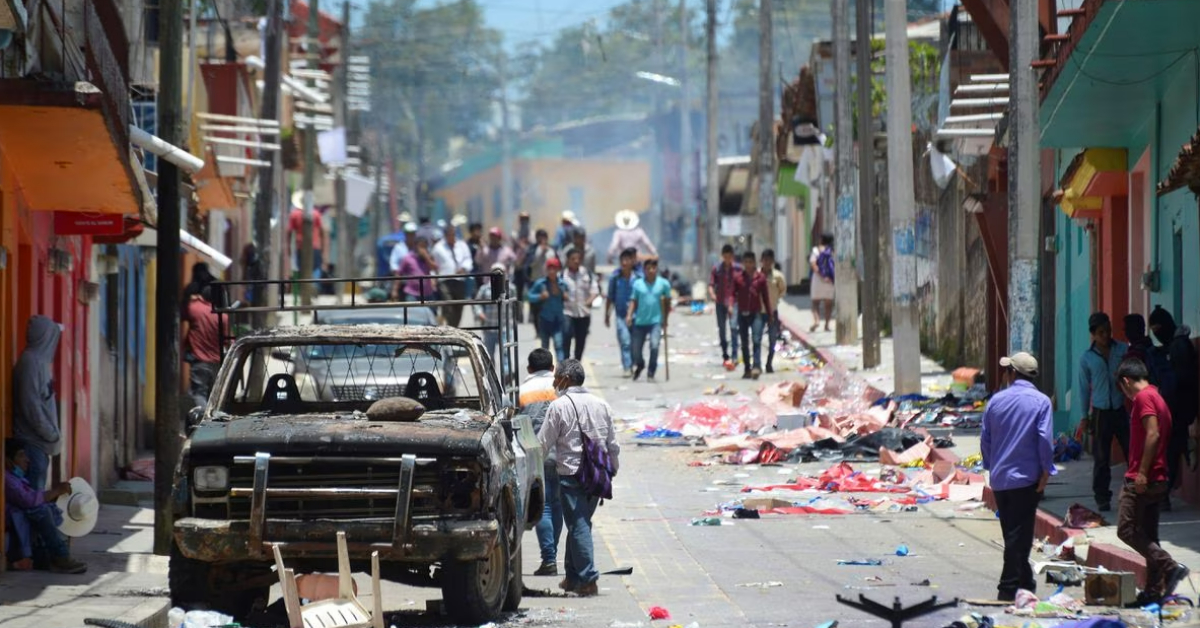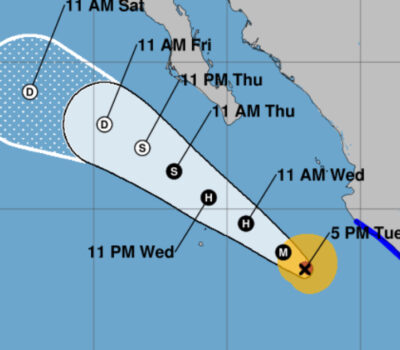In April 2021, 204 people fled their homes in the municipality of Cotija, in Michoacán, after members of a criminal group broke into their homes and threatened them with rifles and grenade launchers. The number of displaced persons in the State continued to increase that year and by December there were already more than 13,500.
In July, around 3,000 people from the municipality of Pantelhó, in Chiapas, left their homes to take refuge in the mountains or in shelters set up in churches or municipal buildings forced by political persecution and territorial siege. Some returned later, but not because conditions had improved.
In Zacatecas, it happened in a similar way. In Guerrero too and in Chihuahua and Jalisco. In 2021, at least 28,943 people had to be forcibly displaced within Mexico due to violence, according to a report presented Tuesday by the Mexican Commission for the Defense and Promotion of Human Rights.
The study counts 42 “episodes of massive internal displacement” in 10 states of the country caused by the violence of armed groups, political persecution, or territorial siege – that is, it does not include the thousands of people displaced, for example, by environmental reasons. Those episodes, which a year earlier had been just over half, forced almost 29,000 people to leave their homes.
The figure is the result of monitoring carried out by the Mexican Commission for the Defense and Promotion of Human Rights since 2016 and whose main source is press publications, although it includes consultations with experts and other organizations. The work of the commission, which is a civil society organization, tries to fill the lack of information on the subject since there is no public record released by the authorities on forced internal displacements in the country.
84% of the displaced escaped from the states of Michoacán, Chiapas, and Zacatecas, according to the analysis; the rest fled from Guerrero, Jalisco, Chihuahua, Oaxaca, Tamaulipas, Durango, and Nayarit, which registered in 2021 the first forced displacement that the organization has heard of.
Daniel Márquez, a member of the team that has carried out the study, a detailed publication of more than 200 pages, highlighted on Tuesday the “focusing” of the phenomenon in three States and the “geographical expansion” towards other federal entities of the territory: “It is normal that with more events there is greater expansion. But there have been more episodes, it hasn’t just expanded.”
The number of internally displaced persons counted by the commission for 2021 is three times higher than that registered a year earlier. Márquez has indicated that it is a figure “never seen before.”
Analysts pointed out this Tuesday that between 2016 and 2019 there had been “a downward trend” in the number of displaced persons. It could not be said, however, that the situation had improved because the high levels of violence persisted. A year later, in 2020, an increase was noted that “was not significant”. But in 2021, the results were “alarming,” the report notes. In total, the organization has registered that, since 2016, 379,322 people have had to leave their homes forced by violence in Mexico.
The study indicates that the majority of displacements affect entire families who lived in rural locations when they had to flee. In at least half of the episodes, the press releases mentioned the presence of girls and boys in the groups. The study also estimates that at least 8,174 of the internally displaced persons in 2021 were indigenous, which represents almost a third of the total (close to 87% resided in Chiapas).
When a person flees their home, they do so mainly within the same municipality in which they reside, according to the report: in a third of the registered mass displacements, people remained in their municipality, and in 60% of the episodes they did so within the same state.
This is so, said Laura Alvarado, another of the experts who participated in the preparation of the report, due to “the type of violence that leads to displacement.”
Analysts have specified in the study the specific forms of violence that triggered the displacements, such as the burning of crops or businesses, the looting of homes, and the murders or disappearances of people from the community, among others.
“This kind of trigger doesn’t leave you room to plan. It is very reactive. Many go to the houses of neighbors or relatives; or to more remote areas, such as the mountainous areas of their own localities; or to the municipal capitals, where they find more state protections in stadiums, churches, health centers…”, Alvarado explained.
For Josep Herreros, UNHCR representative in Mexico, the report is “a valuable tool” because there is “a vacuum” of official information. “Mexico has been suffering the scourge of internal displacement for decades. For some years there has been a will to design response policies. But for that you need to know the dimension”, Herreros criticized this Tuesday during the presentation of the study.
The UNHCR expert has indicated that “the main difficulty” that the authorities face is reaching “durable solutions” so that people can return to their territories: “As long as this is not achieved, a violation of human rights continues to be perpetuated of internally displaced persons.
Herreros has indicated that in these circumstances “it is logical that they seek solutions in another country” and has referred to the crisis on the northern border, where thousands of people wait to cross into the United States and “exercise their legitimate right to asylum.”
Valentina Glockner, an anthropologist specializing in migration and childhood, warned this Tuesday at the presentation of the report that seeking asylum in the United States is presented as “a priority way for displaced families to find safety.” “It is increasingly difficult to find life alternatives in other states [of Mexico],” said Glockner, who is part of a binational team of experts that between 2019 and 2021 documented the impact of forced internal displacement on children and adolescents and their caregivers on the border between Sonora and Arizona and between Chihuahua and Texas. But on the border between the two countries, Glockner detected “a series of mechanisms that have systematically blocked the possibility [of asylum seekers] of getting to safety” and exercising their right.
Glockner has insisted that “US immigration policy is historically biased against Mexican people who seek refuge in the United States.” This adds to a new situation that for the anthropologist is “serious”: “In Mexico, there is no full recognition of internal forced displacement that allows [asylum seekers] to take their cases with greater force and resources, and it is generating a dynamics of friction between migrants and internally displaced Mexicans. “That is almost the worst that can happen: generating confrontational dynamics between people who are in terrible situations of vulnerability and are fleeing our country and other countries,” added the anthropologist.
In April 2021, 204 people fled their homes in the municipality of Cotija, in Michoacán, after members of a criminal group broke into . . .












